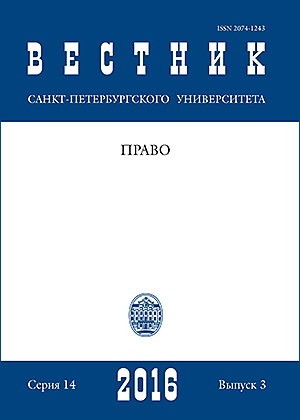The notion of "crimes against humanity": the general recognition and contextual elements in modern international law
DOI:
https://doi.org/10.21638/11701/spbu14.2016.304Abstract
The concept the crimes against humanity (CaH) is generally recognized in international law. This is due to, among other things, the inclusion of СaH in the statutes of international criminal tribunals and the International Criminal Court (ICC). Th e Rome Statute of the ICC (Art. 7) contains the definition of it which fully reflects the customary international law. Confirmation of general acceptance of the criminal nature of the CaH was given by the International Law Commission on the topic “Crimes against humanity”. Adoption of (provisionally) the Commission’s definition of CaH, the identical Art.7 of the Rome Statute (RS), should be evaluated as a confirmation of the general recognition within the meaning of the notion CaH, as expressed in the RS, with regard to both individual offenses and the contextual elements. General obligations and requirements for States to punish, prevent and cooperate in the investigation and persecution of CaH describe, inter alia, the erga omnes nature of their prohibition, according to the Draft . Based on the analysis of recent court practice, the author comes to the following conclusions. Among the contextual elements of CaH “direction against the civilian population” should be interpreted as actions related to the context of organized violence (not necessarily military), as well as ill-treatment. The “civilians” as categories are not completely identical to that in the IHL. CaH are crimes under international law, regardless of whether they have been committed in the time of armed conflict or not. Widespread attack is associated with mass victimization. The systematic attack is an alternative criterion. The criterion of ‘having a plan and policies of the state and the organization’, has no independent value, but may prove an organized and systematic nature of the acts. Refs 21.
Keywords:
crimes against humanity, civilians, International Military Tribunal, International Law Commission, Rome Statute of International Criminal Court, erga omnes
Downloads
References
Downloads
Published
How to Cite
Issue
Section
License
Articles of "Vestnik of Saint Petersburg University. Law" are open access distributed under the terms of the License Agreement with Saint Petersburg State University, which permits to the authors unrestricted distribution and self-archiving free of charge.






